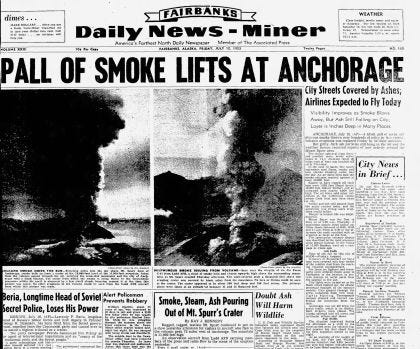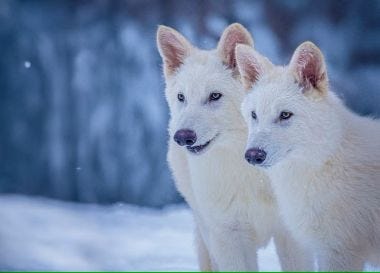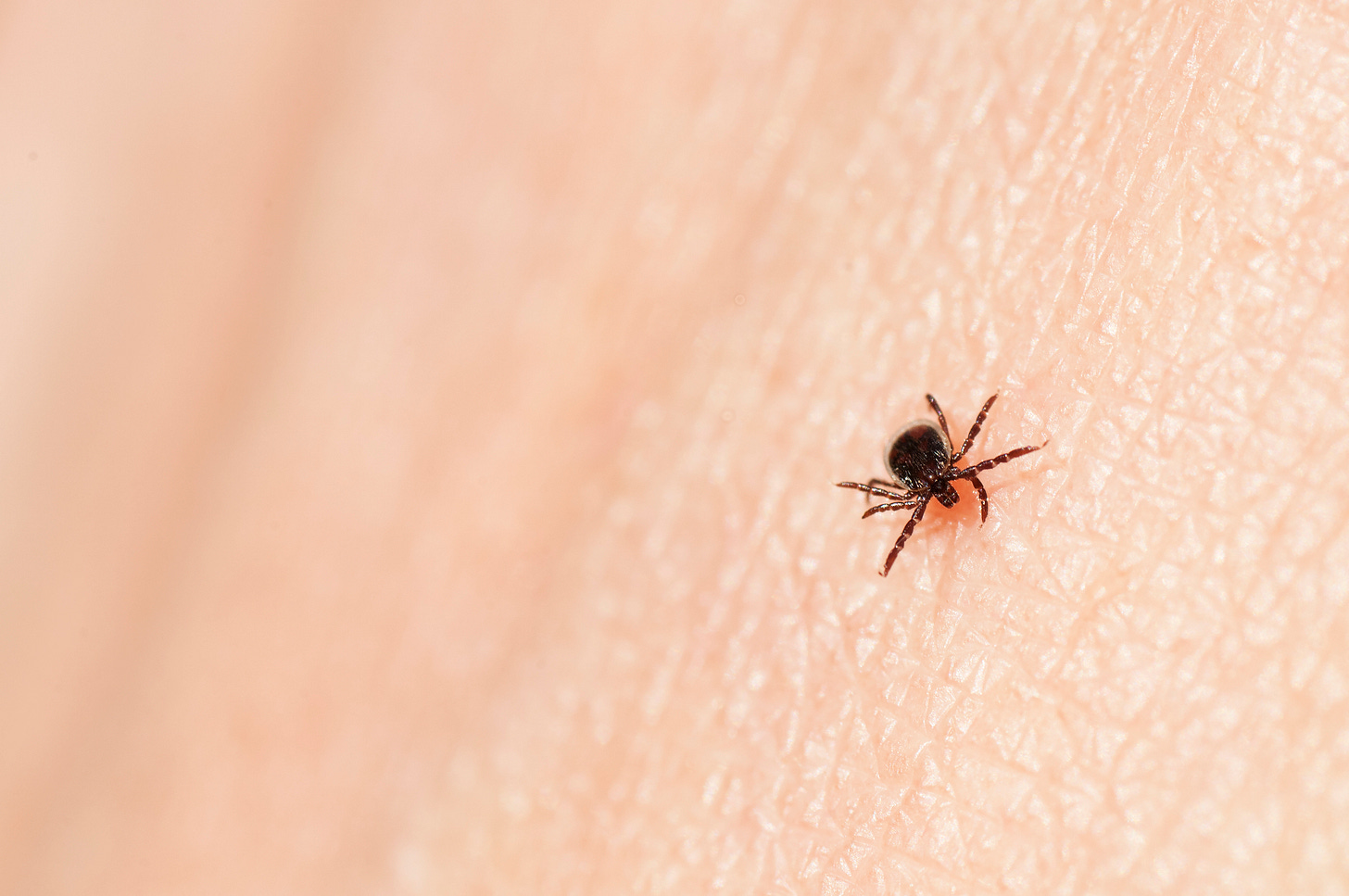Every edition features 7 stories from the past week. I’ll draw on my background in media, journalism, agriculture, biotech, and renewable energy to come up with an interesting selection and to offer some context.
Okay, time to address an existential question - are we alone? The SETI Institute has been tackling it for years and that is the starting point for this week’s 1 Week, 7 Stories.
The SETI Institute (Search for Extraterrestrial Intelligence) is a California based non-profit organization which was incorporated in 1984 and began its search for life beyond Earth the following year. NASA already had a similar small-scale project on the books, but having a dedicated non-profit doing the work was considered to be more efficient and the Institute has been searching ever since. Its website says there are “potentially billions of locations outside our Solar System that may contain life”.
So far, its own work and the data accumulated from advanced telescopes and other scientific instruments sent into space have not found any signs of life.
In an Open Access paper in the Astronomical Journal this week, the authors ask the question that we may need to face some day.
“What if we Find Nothing?”
The paper tackles the question through a mathematical analysis of the number of planets we need to study before the absence of detection becomes statistically meaningful. The paper uses Bayesian statistical analysis which I don’t even pretend to understand, but a media release from the SETI Institute lays it out nicely.
“If scientists examine 40–80 planets and find no signs of life, they can confidently conclude that fewer than 10–20% of similar planets harbor life.”
From there they can start to draw conclusions on upper and lower limits to findings.
All this with a few, ‘but wait there’s more’ statements.
First off, the statistical analysis is based on similar planets to the ones studied. To date, scientists have found many planets orbiting their own stars but have not found a truly Earth-like planet.
Then there is the matter of what we are looking for. We are generally looking for water and gases like oxygen and methane that indicate biological activity, which means we are only searching for something like us.
Finally, we need to be 100% confident in our measurements. Uncertainty in data collection over millions and millions and millions of miles needs to be taken into account.
And now we arrive back at the existential question. If the answer over the coming decades continues to be a “null result”, what are the implications of us being truly alone.
The Big Think and Ars Techinica both say we should embrace the fact and allow it to spur us on to explore even more of the mysteries of our universe.”
Mount Spurr is on code yellow according to the Alaska Volcano Observatory (AVO).
A volcano is the landform that occurs when magma from the Earth's interior rises to the surface and forms a cone which can erupt with molten rock, ash, and gas. Think of it as a giant pressure cooker which needs to release its built-up energy. Mount Spuur appears to be ready to release that energy. The 3,350 metre (11,000 feet) volcano is in the Aleutian volcanic arc and on a good day is visible from Anchorage. As of this writing on April 11th the AVO says that “unrest persists” and seismic activity is elevated with hundreds of small tremors over only a few days.
The last eruptions were in 1953 and 1992. According to the Daily Sitka Sentinel in July of 1953 eyewitnesses in Anchorage who “stepped outside to get a glimpse of the eruption were covered in fine ash within a few minutes”. The 1953 eruption was a one-day one-off event, but the 1992 eruption lasted several days and was preceded by several weeks of seismic activity – much like the current conditions. (If you want an ‘out there’ analogy to today, a psychic counselor quoted in the Anchorage Daily News after the 1992 eruption said it was “one more example of worldwide shifts in the fate of earth and its inhabitants” and that emotional lives were in “as much flux as the guts of Mount Spurr”. Make what ever you want of that!)
The volcano is in a remote region with the closest community of Tyonek being 64 kilometres or 40 miles away. However as the likelihood of an eruption increases people in the Anchorage area are stocking up on buying goggles and masks for themselves and their pets to help protect themselves from any ash fallout as you’ll hear in this interview from NPR.
For a close-up of the volcano here is a short helicopter tour and if you wondered about preparing for the ash fallout the checklists are already appearing online.
In the movie, The Graduate, Dustin Hoffman’s character Ben is taken aside by a friend of the family who says he has one word of advice for him: “Plastics”. It has a double meaning in the movie, but in 1967, plastics were indeed the future. Today that family friend might have a new one-word piece of advice.
Copper.
The average car has about 29kg (65 lbs) and there can be 181kg (400 lbs) of the metal in a new home. When I worked at the CBC, we often joked that if we needed to raise some cash all we had to do was mine the miles of copper out of the ceiling and in the studios. Copper prices and demand has resulted in a 400% rise in copper wire thefts since 2022 according to the Canadian Telecommunications Association. As Bloomberg News said last year the world needs more copper. Lots more.
Despite the current focus on the rare earth minerals, the world ‘needs rewiring’ and because copper is only second to silver when it comes to conductivity, it is vital to the process. Those rare earth minerals may be needed for microchips, but 90% of a completed circuit board is copper and current copper production is struggling to keep up with the demand according to an NPR report last month. As we watch the stock market gyrations right now, copper prices this week may be sending an economic signal. Last week the price of copper was at nearly an all-time high. This week it is an all-time rout.
It may well be a mixed signal.
Demand over the long term is not going away. Last year the world used 20 million tonnes of copper and despite some renewable energy slowdowns in the U.S., the demand for copper in electrification, plumbing, construction, communications, and renewable energy is not abating.
I am not an economic pundit, but new advice for Benjamin Braddock in The Graduate might yet prove to be copper.
Colossal Biosciences knows how to generate hype and how to raise money.
In 2021 Colossal said it had raised $15 million USD ($20.5 million CAD) with the aim of bringing back the Woolly Mammoth within 2 to 4 years. Then in 2023 it said they had raised a further $150 million USD ($206 million CAD) in Series B financing to bring back the Dodo. Then in October of last year it announced the formation of the Colossal Foundation, a US 501(c)(3) charitable organization to stop the extinction crisis. It also said at the time it wanted to bring back the Tasmanian tiger from extinction which had nothing to do with stopping any further extinction.
This week the company says it has brought back the dire wolf species from extinction and has lots of cute white wolf cub pictures to prove its point. Because of its track record of hype over results, the Colossal claim is being met with skepticism.
The dire wolf lived in North America almost 12,000 years ago, but lives on as a character in the TV show, Game of Thrones. That was immediately incorporated into the Colossal announcement with a picture of the show’s creator George R.R. Martin holding one of the pups. The company touted its achievement as a rebirth of the extinct wolf and the “World’s first successfully de-extincted animal”.
To be a fully revived animal however requires a full genome sequence to be copied and reproduced. The 13,000- and 72,000-year-old DNA samples the company worked from were unlikely to have been complete. They then worked to edit the genome of the gray wolf, which the company determined was closest living relative of the dire wolf. Next step was to perform an embryo transfer as a surrogate to carry the genetically modified wolf pups to term. As a CBC headline puts it they have “sort of” brought back the wolf. ‘Sort of’ meaning it is probably just a “grey wolf with a few tweaks”. “
In an article in AAAS Science, one paleoecologist said the work was done with “such a casual disregard not only for the truth but for life itself is genuinely abhorrent to me.” In a BBC video, another expert says,
” does that make it a dire wolf? No. Does it make a slightly modified gray wolf? Yes. And that’s probably about it”.
There is no peer-reviewed scientific paper to back the process which makes the company’s claim more difficult to prove, or perhaps to disprove.
What is also troubling for many scientists is what now? If it were to prove to be a real dire wolf, it has no natural habitat. That all disappeared tens of thousands of years ago. It could only exist in the wild by displacing an existing population which raises a broader question. Why go to such effort and expense to bring an extinct species back while we witness the habitat destruction and extinction of the animals we have on our planet today.
Jeff Bezos and his Bezos Earth Fund may be catching up to Canadian researchers. In a media release this week, the Fund pledged to put $19.3 million into a research initiative across North America, Latin America, Europe, Africa, and Oceania to help livestock herds emit less methane. Research grants will help develop tools to first identify the traits of low-emission cattle and sheep, and then manage breeding programs to select animals that are more “climate efficient”.
When it comes to greenhouses gases, methane has a shorter atmospheric lifetime but traps more heat per molecule so reducing methane emissions is key to reach our climate targets. There are about 940 million cows in the world and together they belch nearly 10% of the greenhouse gas emissions from agriculture.
Canadian researchers have been leading the pack for years in both mapping agricultural methane emissions and studying how to control the problem primarily by the same method the Bezos Earth Fund is pursuing – natural selection. For instance, late in 2024 a federally funded project at the University of Alberta got underway to examine the genetics of beef cattle to help producers select for less methane production from their herds.
The advantage to using generic selection and breeding for climate friendly traits is that it does not raise a warning flag for consumers. It does not involve gene editing or genetic modification. It won’t bring methane production to a screeching halt but with some basic on-farm research, we already making headway in dealing with the problem.
Depending on where you live in Canada, tick season has arrived or is no more than another warm spell away.
As the Merck TickMaps site says, “Think thermometer, not calendar”. The result can be seen on its map showing elevated tick activity already found in many locations across the country.
According to the Canadian Lyme Disease Foundation, Canada has 40 tick species and a few of those species can transmit Lyme disease. The two most common disease carriers are the deer tick (which will still gladly bite people) and the Western black-legged tick which can carry a number of diseases, but Lyme disease and Rocky Mountain spotted fever tend to be the ones we hear about most often.
We have always had ticks in Canada, but warmer winter temperatures and environmental changes have made them more prevalent. The black-legged tick in particular has been able to increase its range northward and westward across the country. There is an economic cost that comes with that expansion and the subsequent higher number of tick-borne diseases.
A tick is a tiny insect, roughly the size of a sesame seed, though once they have filled themselves with a host’s blood, they are much bigger and more visible.
Now that tick season is here there are a few things you can do to protect yourself and your pets.
The are tick repellents on the market for people and dogs. Just in time for tick season, CBC had a story this week on research being done at Acadia University in Nova Scotia. Lemongrass has been long used as a ‘natural’ repellent and the new research bears out its efficacy. In tick prone areas limit the little beasts access to your skin by wearing long sleeves and tuck your pants into your socks. After coming in from a walk or hike check yourself, your children and your pets for ticks. The Weather Network has a good story outlining everything you can do to keep ticks at bay and CanLyme has a solid explanation of what to do if you find a tick embedded on your skin.
If you want to get involved in tick-related research you might want to become a citizen scientist and help out the eTick initiative from Bishop’s University. Not only will you be helping researchers, but if you use the App you’ll receive information back on the type of tick you found, its medical relevance, how to deal with the tick, and information tailored to your location. Information on the project and the relevant links are on the Bishop’s University website.
And lastly, a catch-up on space news, starting with news from terra-firma that will likely influence the future of where we are headed after leaving our own planet.
Elon Musk wants the U.S. to aim for Mars, Jason Isaacman the White House nominee to lead NASA said during his confirmation hearing this week that he would making returning to the moon a priority. As has become a common reading of the picks for key U.S administration positions however it may not be that straightforward. First off Isaacman is a billionaire business partner of Musk’s and secondly his opening statement to the committee made no promise to land on the moon and supported a crewed mission to Mars according to Politico.
This week we also got a look at the first X-ray taken of an astronaut while in space. Whether astronauts are bound for the moon or Mars, the ability to take X-rays in space will be important for diagnosing medical conditions and to study the effects of space travel such as decalcification. The X-rays were taken during the SpaceX Fram2 mission and was made possible by Canadian technology from KA Imaging, a spinoff from the University of Waterloo. CBC has the complete story and an interview with the founder and chief technology officer of KA Imaging.
And to wrap up this edition of 1 Week, 7 Stories, data centres may be going to the moon. What could be more physically secure and with an unlimited supply of solar power than a stack of computers storing and processing data in a remote location, far from prying eyes. Lonestar Data Holdings of Florida said it sent a tiny data centre to the moon on the Intuitive Machines’, Athena Lander. It was really tiny – the size of a hard-back book – but it was considered a proof of concept. With no environmental concerns or nosey neighbours a moon-based data centre could be part of the future use of the moon. Also being consider are orbiting data centres. A feasibility study by a joint French-Italian aerospace group says a medium-sized data centre equivalent to 5,000 servers could be build in orbit using existing technology. No word on whether tech support will make an on-site visit in there is a problem. Read more from the BBC.
Read, comment, subscribe, and share this newsletter.
I’m available for contract and freelance work with not-for-profits and charities. With 40 years of experience behind me and lots of time ahead of me, I’m here to help you make a difference in your media relations, public relations, and general communications needs.




